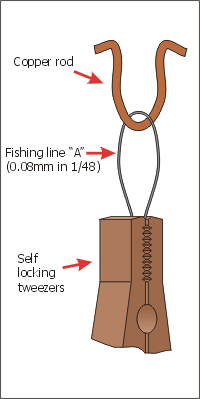
Turnbuckles
By: Tomasz Gronczewski
The method that I am describing is meant to replicate turnbuckles out of fishing line but it is really unimportant what sort of plain line will be attached to turnbuckles later on. Also I suppose it can be very easy to apply the method to real wire rigging.
I use 0.08mm fishing line (I am metric guy) to "twist" turnbuckles.
First I cut ca. 5cm (2 inch) of the line (hereinafter called line "A"), then I bend the line "A" in the middle and lock both tips in one self-locking tweezer. U-shaped line remaining outside tweezers should be no bigger than 1cm (ca. 1/3 inch). I tighten the line "A" using U-shaped thin copper rod.

Keeping the copper rod in one hand I vigorously spin the tweezers with the line "A", until the line is rolled into turnbuckle.
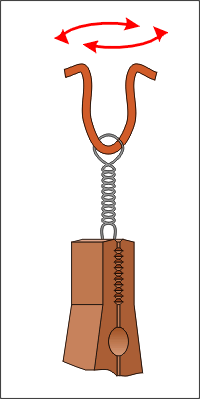
Keeping everything tightened I smear the turnbuckle with CA glue.
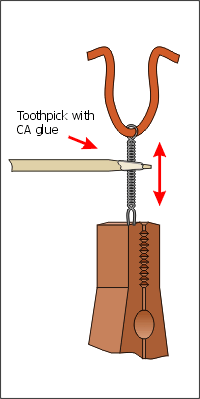
After a minute, when CA glue is supposed to have dried, I remove brass rod, and as a result a hollow "ear" emerges at the end of turnbuckle. I thread the other long fishing line (hereinafter called line "B") through the "ear".
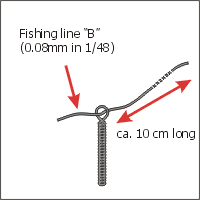
I tight-up a little knot.
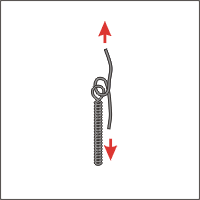
I pour a droplet of CA glue onto the knot and cut excess end of the line "B"
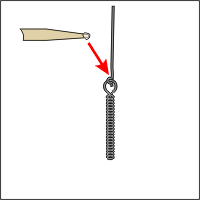
I paint whole line dragging it through a drop of Aeromaster flat Black.
I have found that, the most efficient way to make turnbuckles is to do them "inefficiently". It is quicker to make quickly 15 turnbuckles and to select 10 best examples than to make efforts to replicate 10 accurate turnbuckles.
Splitting production line into three stages seems to be most effective: first I prepare all turnbuckles, then I attach all lines to them, finally I paint all sets.
Considering how quick I made one turnbuckle and how long CA glue dried, I have found that it is far better to make two turnbuckles simultaneously. When one turnbuckle hangs and dries I twist the second. So that double set of tooling (tweezers and brass rods) is necessary.
It is essential to use self locking tweezers to handle with turnbuckles. One to keep fishing line, second to keep U-shaped brass rod, and later one to keep attached line, second to keep turnbuckle.
In order to mould proper shape of the element, after each gluing, turnbuckles should dry being hung and being weighted by self locking tweezers.
During attachment of the plain line to the turnbuckle it is quite important to tight a knot parallely to turnbuckle axis (see pic).
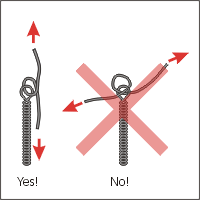
I think that the best method to paint whole line is to drag it through a paint drop poured onto your business card :o)